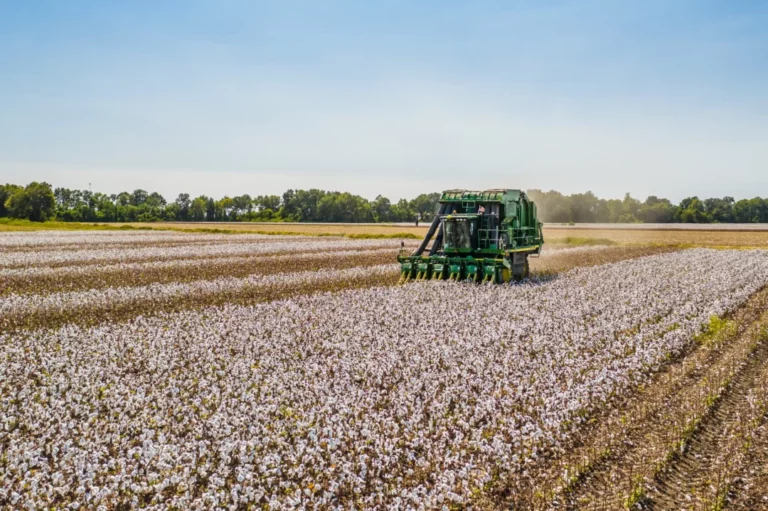What Is A Sustainable Ecosystem?
Embark on a captivating journey into the heart of nature’s delicate balance: Uncover the wonders of a sustainable ecosystem and how it holds the key to a thriving future for all.
A sustainable ecosystem is defined as a self-contained environment where resources are managed and used efficiently, utilizing natural processes and human inputs in such a way that ensures environmental sustainability.
They are ecosystems that allow human activities to be conducted in harmony with sustainable practices that replenish resources in an effort to protect surrounding wildlife and their habitats, reduce food waste, reduce carbon emissions to protect greenhouse gases, and conserve resources.

Sustainable Ecosystems And The Environment
Sustainable ecosystems also encourage biodiversity by offering diverse habitats for different species of plants and animals, ensuring every species has its own niche in the food chain. These sustainable solutions can also mitigate against climate change and environmental issues, as well as provide stability from threats such as population booms, which could otherwise cause environmental collapse.
Environmental Protection Agency
The Environmental Protection Agency (EPA) is an agency within the United States government which actively works to protect human health and restore the environment. Established in 1970 by President Nixon due to increasing concern over pollution and other dangers posed by man-made chemicals, the EPA was created to establish national standards, bills, and regulations that safeguard both public health and the environment.
Get Your Hand on Your Eco-Friendly Living Starter Guide!
Also read: Eco-Friendly Vs Environment Friendly: The Difference
In order to achieve its goals the EPA regularly conducts research on various issues before proposing regulations. These regulations that are proposed are then presented at public hearings where citizens can weigh in on how the changes would affect them or their environment.
The EPA is a valuable asset for protecting our planet from future damage as a result of irresponsible practices as it ensures that not only our health but also our environment is safe from degradation.
Benefits Of Sustainable Ecosystems
Achieving and maintaining sustainable ecosystems offers immense benefits to both humans and the environment. Conservation of natural resources, controlling air pollution, preserving biodiversity, creating habitats for native species, moderating global climate change, and reducing landslides and other risks of disaster are just some of the positive effects that stem from environmental management.
Maintaining a healthy ecosystem also has tangible economic as well as ecological dividends. Different sources of renewable energy such as solar or wind can be employed in order to cut down on the emissions produced by traditional methods like oil and coal while sustaining ecosystem services such as water filtration and habitat protection at low costs.
You may like: Non-Toxic Wood For Spoons: The Best Options For Your Kitchen
With this approach, businesses can remain profitable while also reducing their environmental footprint over time. It is clear that the benefits of sustainable ecosystems are manifold, thus making them an essential part of our current efforts for a better world to live in.

Examples Of Sustainable Ecosystems
Sustainable ecosystems include marine and terrestrial ecosystems that are self-sustaining through the implementation of responsible practices. Examples of resilient and healthy marine ecosystems include coastal wetlands, coral reefs, estuaries, and seagrass beds.
These self-sustaining environments can regulate climate, water purity, and air quality, as well as provide habitat for various living species. On land, examples of sustainable ecosystems consist of temperate and tropical forests which can grow indefinitely given responsible management systems.
Examples of these include redwood forests in the United States, rainforests in India and Brazil, and mangrove swamps found in parts of Asia, Africa, and the Middle East. In each location, key strategies have been implemented to ensure that the environment itself is kept in balance without compromising any part of its ecology.
Similar: Try These Easy And Non-Toxic Ways To Kill Flies
Marine Ecosystems
Marine ecosystems are some of the most captivating places on Earth, teeming with biodiversity and integral to life as we know it. Comprising a vast array of habitats, they run from rocky intertidal shores to coral reefs, kelp forests to sea-grass meadows.
Coral Reefs
Coral reefs provide an array of opportunities for recreation and exploration. Coral reefs can be found in a variety of shapes and sizes, ranging from the colorful corals found in shallow waters to larger coral systems located in the depths of the ocean.

Coral stems and branches are composed of animals called polyps, which feed on plankton floating by, thus making coral reefs highly productive habitats with a vast array of wildlife living above and below them. Coral species vary from soft corals such as sea fans to hard corals that provide a sense of physical stability among the other inhabitants.
Furthermore, coral reefs provide protection along the coastal waters from strong waves, storms, and flooding meaning they are essential for sustaining thriving marine ecosystems. Without coral reefs, many species would be unable to survive due to their presence having an immense impact on underwater habitats and various types of flora and fauna.
Read more: Is Soy Wax Eco-Friendly Or Sustainable?
Seagrass Beds
These underwater meadows create an environment that supports a staggering array of aquatic life, including larger predators such as seahorses, rays, and even sharks. These grass beds also serve an important purpose by helping to protect shorelines from eroding during storms, while absorbing pollutants and carbon dioxide from their surrounding waters.
Not only do seagrass beds provide a safe haven for many species of sea life, but they are also of great importance to people — providing food sources, shelter, and even medicine — making seagrass beds indispensable for healthy marine ecosystems worldwide.
Terrestrial Ecosystems
Terrestrial ecosystems come in many sizes and locations, ranging from deserts to rainforests to alpine meadows. They provide food, shelter, and resources for the plants and animals that live there.

Terrestrial ecosystems are important for the regulation of water, air, and energy flows on Earth’s surface. These ecosystems are incredibly diverse, with unique characteristics that allow them to thrive in a variety of conditions.
For example, deserts have adapted species that can thrive and reproduce under extreme temperatures while tropical rainforests contain a wealth of biodiversity never seen before. Terrestrial ecosystems are also essential in order to combat climate change as they trap CO2 emissions in the atmosphere.
Redwood Forests
Redwood trees, along with sequoia and Douglas Fir, dominate both the tree line and canopy in Redwood Forests, allowing them to grow up to hundreds of feet tall and creating a feeling of openness that is unique to these types of ecosystems. Redwoods thrive in this environment because they have adapted a system of deep root systems that allow them to stay moist and healthy while literally towering over every other type of vegetation around them.
Redwoods provide many benefits as well: providing habitat for numerous species of birds, animals, and insects, helping to sustain entire food webs; capturing large amounts of carbon dioxide from the air and storing it safely within their trunks; and allowing visitors to the Redwoods an opportunity for spiritual connection with the beauty that only comes from being surrounded by ancient giants.
Rainforests
Rainforests contain an incredible variety of flora and fauna that can’t be found anywhere else. Rainforest canopy is known to provide shelter to animals, filter the air humans breathe, and regulate temperature, relative humidity, and rainfall throughout the world.
Related: Are Coffee Filters Compostable?
Rainforest soil also serves an important purpose – it provides nutrients to a vast array of plants. Rainforest trees capture carbon dioxide from the atmosphere, naturally reducing our impact on global climate change.

Conclusion
By using sustainable methods rather than excessive force or exploitation of resources, sustainable systems provide a blueprint for economic growth while preserving nutritious sources of food without adversely affecting people or the planet. With backup plans to fall on when various components fail, sustainable ecosystems are well-equipped to withstand chaos and sustain life for years to come.






